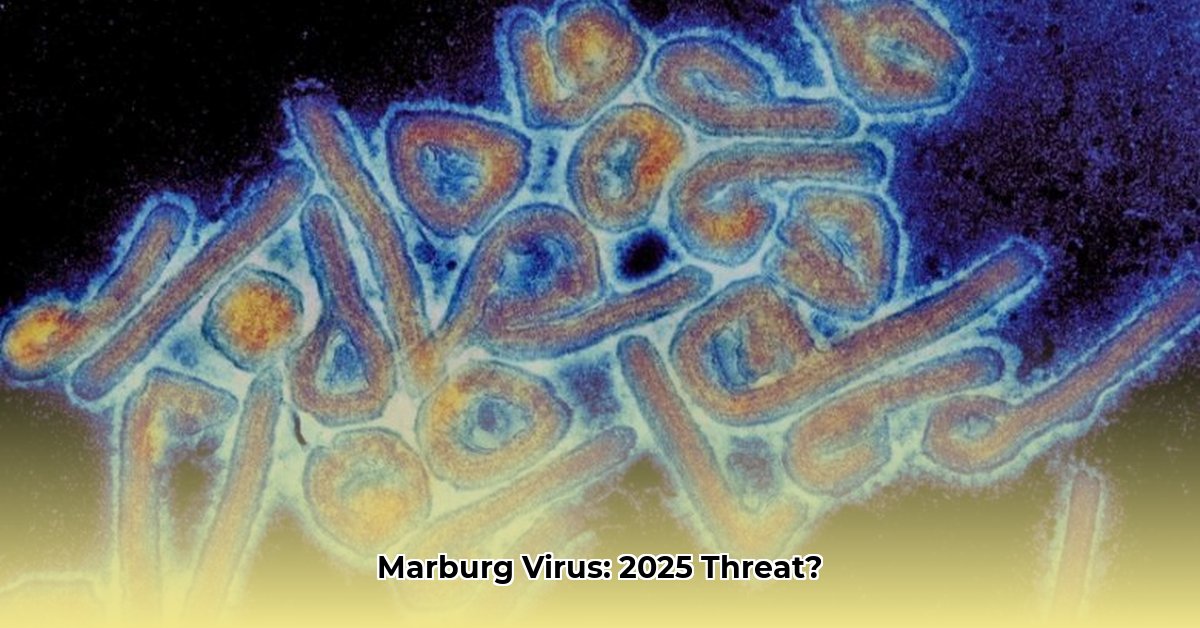This article provides comprehensive information about the Marburg virus, including symptoms, transmission, and prevention. While a hypothetical 2025 outbreak scenario is used for illustrative purposes, the core information is based on established facts and current research. Always consult with your local health authorities and the World Health Organization (WHO) for the most up-to-date information.
Understanding Marburg Virus Disease
The Marburg virus, a close relative of Ebola, causes Marburg virus disease (MVD), a severe hemorrhagic fever. While less known than Ebola, it poses a significant threat due to its high fatality rate, reaching up to 88% in cases without proper medical care.
What are the Symptoms?
Marburg virus symptoms can initially mimic the flu, making early diagnosis challenging. After an incubation period of 2 to 21 days, symptoms typically emerge abruptly.
| Stage | Symptoms |
|---|---|
| Early | Sudden high fever, severe headache, intense fatigue, muscle aches, sore throat, cough, potential rash |
| Progressive | Worsening of initial symptoms, severe watery diarrhea, abdominal pain, nausea, vomiting, bleeding (gums, nose, venipuncture sites, internal) |
| Severe | Confusion, irritability, aggression, orchitis (testicular inflammation), central nervous system involvement |
Because these symptoms overlap with other diseases like malaria and typhoid fever, laboratory testing is crucial for accurate diagnosis. Current research aims to develop more effective diagnostic tools and treatments.
How Does Transmission Occur?
Marburg virus spreads through direct contact with bodily fluids (blood, saliva, vomit, urine, feces) of infected individuals. Indirect contact with contaminated surfaces or materials can also transmit the virus. The Rousettus fruit bat is considered the natural reservoir, and human exposure often occurs through contact with bat habitats (caves, mines).
| Transmission Route | Description |
|---|---|
| Direct Contact | Contact with infected bodily fluids. |
| Indirect Contact | Contact with contaminated surfaces or materials. |
| Bat Exposure | Contact with Rousettus aegyptiacus fruit bats or their environments. |
| Burial Practices | Traditional funeral rituals involving contact with the deceased. |
| Healthcare Settings | Exposure to infected fluids through needlestick injuries or contact with contaminated equipment. |
Healthcare workers are at elevated risk, emphasizing the importance of stringent infection control protocols. Current research continues to investigate potential transmission routes and refine our understanding of the virus’s behavior.
2025 Hypothetical Outbreak Scenario & Prevention
To illustrate the potential impact of a Marburg outbreak, let’s consider a hypothetical scenario in the Democratic Republic of Congo in August 2025. Imagine a remote village experiencing a surge of severe illnesses, with symptoms like high fever, exhaustion, and bleeding. The virus, likely originating from fruit bats, could spread rapidly due to close community contact, limited healthcare access, and delayed diagnosis.
If the virus spreads to neighboring regions, international aid organizations would likely implement quarantine and medical assistance. This scenario underscores the critical need for early detection and rapid response to contain hemorrhagic fevers like Marburg.
Protective Measures
While there is no approved antiviral treatment or vaccine for Marburg virus disease, preventative measures are essential. These include:
- Avoiding contact with infected individuals: Limiting close contact is crucial.
- Hygiene practices: Frequent handwashing with soap and water or alcohol-based sanitizer.
- Dietary precautions: Avoiding bushmeat consumption.
- Protective gear: Using masks and gloves in high-risk areas.
- Safe burial practices: Adhering to guidelines to prevent transmission during funerals.
Past Outbreaks and Ongoing Research
Past outbreaks, such as the 2005 Angola outbreak, offer valuable insights into the devastating impact of Marburg virus. Analyzing these events helps refine containment strategies (quarantine, contact tracing, supportive care) and identify areas for improvement (diagnostic testing, experimental treatments, safe burial practices).
Ongoing research is vital for understanding the virus’s transmission, symptoms, and potential treatments. While current research suggests supportive care (rehydration, symptom management) improves survival chances, a definitive cure remains elusive.
Current Outbreak Information
As of October 25, 2024, the Kagera Region of Tanzania is experiencing a Marburg virus outbreak. However, the situation is dynamic, and affected areas can change rapidly. For the latest updates, consult the WHO and CDC websites, which provide reliable information on case numbers, travel advisories, and safety recommendations.
| Location (Country, Region) | Outbreak Start Date | Number of Cases | Number of Deaths |
|---|---|---|---|
| Tanzania (Kagera Region) | 2024 | Refer to WHO and CDC for latest data. | Refer to WHO and CDC for latest data. |
Understanding the location of an outbreak is crucial for assessing personal risk, informing travel decisions, enabling effective resource allocation by public health officials, and guiding scientific research to prevent future outbreaks. While the information presented here provides a comprehensive overview, it’s essential to remember that our understanding of Marburg virus is constantly evolving. Staying informed and following expert guidance are crucial for protecting yourself and your community.







